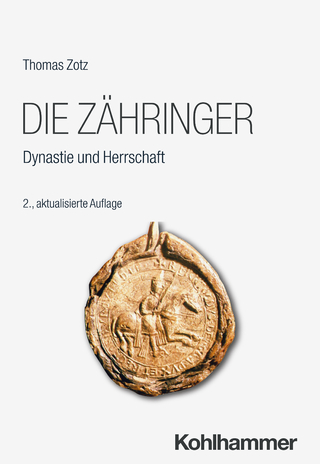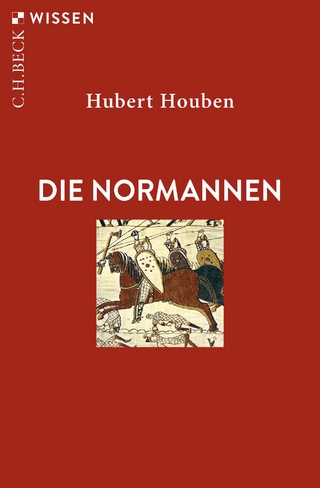
The Caribbean before Columbus
Oxford University Press Inc (Verlag)
978-0-19-060525-4 (ISBN)
The Caribbean before Columbus is a new synthesis of the region's insular history. It combines the results of the authors' 55 years of archaeological research on almost every island in the three archipelagoes with that of their numerous colleagues and collaborators. The presentation operates on multiple scales: temporal, spatial, local, regional, environmental, social, and political. In addition, individual sites are used to highlight specific issues. For the first time, the complete histories of the major islands and island groups are elucidated, and new insights are gained through inter-island comparisons. The book takes a step back from current debates regarding nomenclature to offer a common foundation and the opportunity for a fresh beginning. In this regard the original concepts of series and ages provide structure, and the diversity of expressions subsumed by these concepts is embraced. Historical names, such as Taíno and Lucayan, are avoided. The authors challenge the long-held conventional wisdom concerning island colonization, societal organization, interaction and transculturation, inter- and intra-regional transactions (exchange), and other basic elements of cultural development and change. The emphasis is on those elements that unite the Bahamas, Lesser Antilles, and Greater Antilles as a culture area, and also on their divergent pathways.
Colonization is presented as a multifaceted wave-like process. Continuing ties to the surrounding mainland are highlighted. Interactions between residents and new colonists are recognized, with individual histories contingent on these historical interactions. New solutions are offered to the "Huecoid problem" the "Carib problem," the "Taíno problem," and the evolution of social complexity, especially in Puerto Rico.These solutions required a rethinking of social organization and its expression on the landscape. There comes a time when the old foundation can no longer support the structure that was built upon it; this is that time.
William F. Keegan is Curator of Caribbean Archaeology (FLMNH) and Professor of Anthropology at the University of Florida. He also serves as Associate Director for Research and Collections. He co-edited The Oxford Handbook of Caribbean Archaeology (OUP, 2013). Corinne L. Hofman is Professor of Caribbean Archaeology and Dean Faculty of Archaeology, Leiden University, as well as a co-editor of The Oxford Handbook of Caribbean Archaeology (OUP, 2013).
List of Figures
List of Tables
1. CARIBBEAN KALEIDOSCOPE
The Caribbean Islands
Different Ways of Seeing
Far Tortuga
The Name Game
Ciboney and Guanahatebey
Indios, Arawak, Taíno, Lucayan, Igneri
Carib and Kalinago
Changing Frames of Reference
Underlying Structure
2. THE EARLIEST INHABITANTS
FLAKED-STONE TOOL COMPLEXES
Origins
Cultural Characteristics
Environmental Considerations
Barrera-Mordán Site, Dominican Republic (representing circa 4000 BC)
Lithic Age Assemblages
GROUND-STONE TOOL COMPLEXES
Banwari Trace Site, Trinidad (circa 5000 B.C)
Origins
Climate Change and Anthropogenic Landscapes
Archaic Age Assemblages in the Greater Antilles
Archaic Age Pottery
European and Archaic Age Encounters
Conclusions
3. THE EARLY CERAMIC AGE
From Forest to Sea
Creating Identities
Trants Site, Montserrat (circa 400 BC to AD 500)
Hacienda Grande Site, Puerto Rico (circa AD 150 to 500)
Redefining the Early Ceramic Age
Morel Site, Guadeloupe (circa 400 BC to AD 1400)
Scale and Perspective
Settlement Patterns
Golden Rock Site, St. Eustatius (circa AD 600 to 850)
Subsistence Economy
Material Culture
Sociopolitical Organization
Cosmology
Conclusions
4. POST-SALADOID PUERTO RICO
Dispersion (circa AD 500 to 900)
Crab/Shell Dichotomy
A Plethora of Pottery Styles
Population Growth and Settlement Patterns
Río Tanamá 2 Site (cal AD 980 to 1490)
Egalitarian, Hierarchical, or Heterarchical?
Settlement Landscape and Community Structure (AD 950 and Beyond)
Río Tanamá 1 site (circa cal AD 980 to 1490)
Formalization of Exchange
Plaza de Estrella, Tibes Ceremonial Center
"Taíno" in Puerto Rico?
Late Pottery Styles (Figure 4.6)
Demography
Stone-lined Courts and Plazas
Cacicazgos
Conclusions
5. MEILLACOID AND CHICOID WORLDS
Foragers and Farmers
Pottery Styles in Hispaniola
An Island Divided
El Cabo Site, Southeastern Dominican Republic (circa AD 600 to 1500)
Northwestern Dominican Republic
Meillacoid Revolution
El Flaco Site, Northwestern Dominican Republic (circa AD 900 to 1500)
Île à Rat Site, Haiti (circa AD 900 to 1500)
Social Transformations
Cacicazgos
En Bas Saline, Haiti (circa AD 1492)
Sweetness and Power
Chicoid Expansion
Conclusions
7. CUBA, THE BAHAMA ARCHIPELAGO, AND JAMAICA
CUBA
Preagroalfarera (Archaic Age)
Protoagrícola (Incipient Agriculture)
Agricultores Ceramistas (Ceramic Age)
Regional Integration
El Chorro de Maíta, Banes (circa AD 1200 to post AD 1600)
Precious Metals
Chicoid Influences
Los Buchillones Site (circa AD 1220 to 1640)
Conclusions
BAHAMA ARCHIPELAGO
Exploration and Colonization
Coralie Site, Grand Turk, Turks & Caicos Islands (circa AD 700 to 1100)
Small Islands
Governors Beach Site, Grand Turk, Turks & Caicos Islands (circa AD 1100 to 1300)
Permanent Settlement
Late Ceramic Age
MC-6, Middle Caicos, Turks & Caicos Islands (circa AD 1400 to 1600)
The (Not So) Empty Islands
JAMAICA
Pottery Series as Distinct Cultures
Paradise Park Sites, Westmoreland (circa AD 850 and AD 1430)
Conclusions
8. LESSER ANTILLEAN NETWORKS
The First Islanders
Late Archaic Age
Archaic Age Summary
Neolithization of the Lesser Antilles
Post-Saladoid Developments
Anse à la Gourde Site, Guadeloupe (circa AD 450 to 1350)
Windward Islands (Southern Lesser Antilles)
Giraudy Site, Saint Lucia (circa AD 900 to 1500)
Social and Political Networks
Kelbey's Ridge 2 Site, Saba (circa AD 1350)
Demographic Collapse after AD 1300
Morne Cybèle and Morne Souffler Sites, La Désirade (circa AD 1440 to 1460)
Kalinago Archaeology
Argyle Site, St. Vincent
Discussion
8. CARIBBEAN
Columbus and Cannibals
Cannibal Raids or Indigenous Trade?
Colonial Emergence
Language
Archaeological Research
Indigenous Settlements
Subsistence
Social Organization
Cacicazgos (Chiefdoms)
Mythology and Religion
Demography
Early Colonial European Chroniclers and the French Missionaries
Kaleidoscope: The Final Turn
REFERENCES CITED
| Erscheinungsdatum | 04.02.2017 |
|---|---|
| Zusatzinfo | 25 b/w line drawings; 42 b/w halftones |
| Verlagsort | New York |
| Sprache | englisch |
| Maße | 229 x 152 mm |
| Gewicht | 476 g |
| Themenwelt | Geisteswissenschaften ► Archäologie |
| Geschichte ► Allgemeine Geschichte ► Mittelalter | |
| Geschichte ► Allgemeine Geschichte ► Neuzeit (bis 1918) | |
| Geisteswissenschaften ► Geschichte ► Regional- / Ländergeschichte | |
| Sozialwissenschaften ► Soziologie | |
| ISBN-10 | 0-19-060525-1 / 0190605251 |
| ISBN-13 | 978-0-19-060525-4 / 9780190605254 |
| Zustand | Neuware |
| Haben Sie eine Frage zum Produkt? |
aus dem Bereich


